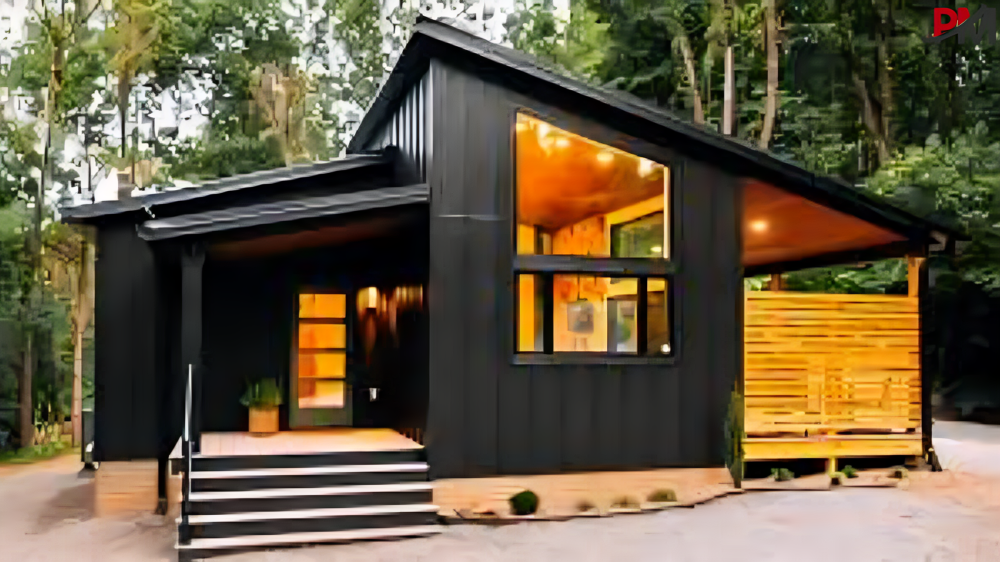In recent years, the concept of tiny houses has captured the imagination of people around the world. These small, efficient living spaces offer a minimalist approach to housing that aligns with the growing desire for sustainable, cost-effective, and flexible lifestyles. Whether as a primary residence, vacation retreat, or a solution to housing crises, tiny houses are reshaping the way we think about homeownership and living spaces.
The Tiny House Movement: An Overview
The tiny house movement emphasizes living simply and intentionally. The typical size of a tiny house ranges from 100 to 400 square feet, a stark contrast to the average American home size of over 2,000 square feet. Despite their compact nature, tiny houses are designed to maximize functionality, often incorporating creative storage solutions and multi-purpose furniture.
Why Choose a Tiny House?
1. Affordability
Tiny houses are significantly cheaper to build or buy compared to traditional homes. The cost typically ranges from $10,000 to $100,000, depending on customization and materials. This affordability makes tiny houses an attractive option for first-time homeowners, retirees, and those looking to downsize.
2. Sustainability
Smaller homes consume fewer resources. From reduced energy usage to a smaller carbon footprint, tiny houses appeal to environmentally conscious individuals. Many tiny homes are built with eco-friendly materials and include renewable energy solutions such as solar panels.
3. Mobility and Flexibility
Many tiny houses are built on wheels, allowing owners to relocate with ease. This flexibility is perfect for individuals or families who value mobility, whether for work, adventure, or lifestyle changes.
4. Minimalist Lifestyle
Living in a tiny house encourages a minimalist lifestyle by prioritizing experiences and relationships over material possessions. This shift can lead to reduced stress and an enhanced quality of life.
Designing a Tiny House: Key Considerations
1. Maximizing Space
Smart design is essential in a tiny house. Vertical storage, foldable furniture, and multifunctional spaces are common features. For example, a staircase might double as a set of drawers or bookshelves.
2. Energy Efficiency
Tiny houses are often designed with energy efficiency in mind. High-quality insulation, energy-efficient appliances, and renewable energy sources like solar panels are popular choices.
3. Personalization
Despite their size, tiny houses offer endless opportunities for customization. Owners can tailor their homes to reflect their tastes, whether through color schemes, built-in furniture, or unique architectural features.
4. Legal and Zoning Requirements
Before building or purchasing a tiny house, it is crucial to research local zoning laws and building codes. Some areas may have restrictions on tiny homes, while others actively encourage their development as solutions to housing shortages.
Types of Tiny Houses
1. Tiny Houses on Wheels (THOWs)
Built on trailers, THOWs offer unparalleled mobility. They are popular among travelers and individuals who value flexibility.
2. Container Homes
Made from repurposed shipping containers, these tiny houses are both durable and sustainable. They often feature industrial aesthetics and are highly customizable.
3. Tiny Cabins
Stationary tiny homes designed to blend with natural surroundings. These are often used as vacation homes or off-grid retreats.
4. Prefab Tiny Houses
Prefabricated tiny houses are manufactured off-site and then delivered for assembly. They are cost-effective and quick to set up.
Benefits of Tiny Houses
1. Economic Freedom
With lower costs, tiny houses enable owners to save money, reduce debt, and achieve financial independence.
2. Environmental Benefits
Tiny homes use fewer resources during construction and operation. They are a sustainable solution to overconsumption and environmental degradation.
3. Community Building
Many tiny house owners join or create tiny house communities, fostering strong social bonds and shared resources.
4. Quick Construction
Tiny houses can be built in a fraction of the time it takes to construct a traditional home, making them ideal for urgent housing needs.
Challenges of Tiny House Living
1. Limited Space
Adapting to a small living area can be challenging, especially for families or individuals with many possessions.
2. Zoning and Legal Issues
Navigating local regulations can be complex. Not all jurisdictions are tiny house-friendly.
3. Maintenance
Tiny houses require regular maintenance, particularly for mobile units that are exposed to road wear and tear.
4. Resale Value
The market for tiny houses is niche, which may impact resale potential.
Tiny House Communities
As the tiny house movement grows, communities dedicated to tiny living have emerged worldwide. These neighborhoods provide shared amenities, social support, and a sense of belonging. Examples include:
- Boneyard Studios (Washington, D.C.)
- Community First! Village (Austin, Texas)
- Orlando Lakefront at College Park (Orlando, Florida)
Steps to Building Your Own Tiny House
1. Planning
Define your goals, budget, and requirements. Research designs, materials, and local regulations.
2. Designing
Work with an architect or use online resources to create a layout that suits your lifestyle.
3. Construction
Choose between DIY or hiring professionals. Source materials and begin building.
4. Finalizing
Complete necessary inspections and certifications. Move in and enjoy your tiny house.
The Future of Tiny Houses
The tiny house movement is expected to grow as more people recognize its potential to address housing shortages, reduce environmental impact, and provide affordable living options. Innovations in design, technology, and policy will further enhance the appeal and feasibility of tiny homes.
FAQs
1. What is the average cost of a tiny house?
The cost of a tiny house typically ranges from $10,000 to $100,000, depending on factors like size, materials, and customization.
2. Are tiny houses legal everywhere?
No, zoning laws and building codes vary by location. It is essential to research local regulations before building or purchasing a tiny house.
3. Can a family live in a tiny house?
Yes, many families live in tiny houses. Creative design and efficient use of space are key to accommodating multiple occupants.
4. What are the main challenges of tiny house living?
Challenges include limited space, legal hurdles, maintenance, and potential difficulties in reselling the property.
5. How can I make my tiny house eco-friendly?
Incorporate sustainable materials, energy-efficient appliances, renewable energy sources, and water-saving fixtures to make your tiny house environmentally friendly.
Conclusion
Tiny houses represent more than just a trend; they symbolize a shift toward sustainable, intentional, and flexible living. By embracing this lifestyle, individuals can enjoy economic freedom, environmental responsibility, and a sense of community. Whether as a solution to modern housing challenges or a personal choice for a simpler life, tiny houses offer a promising future.



